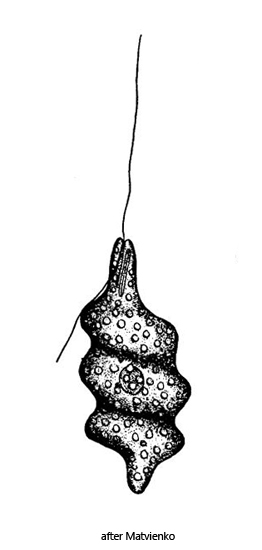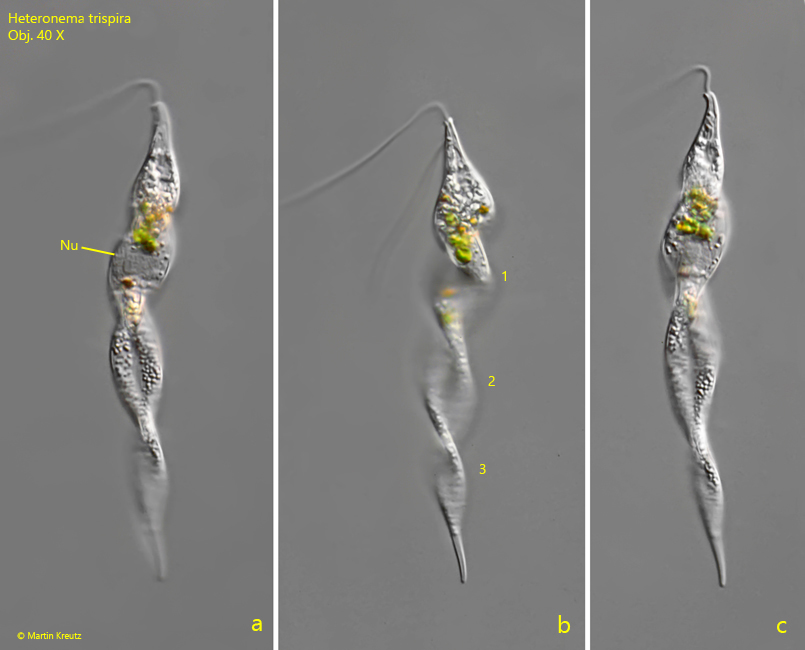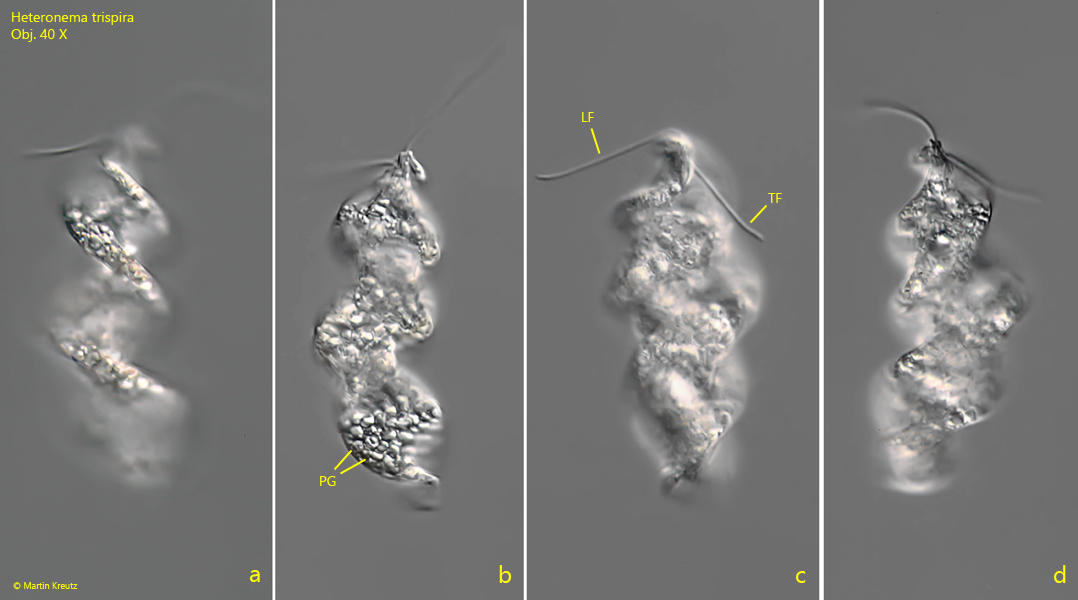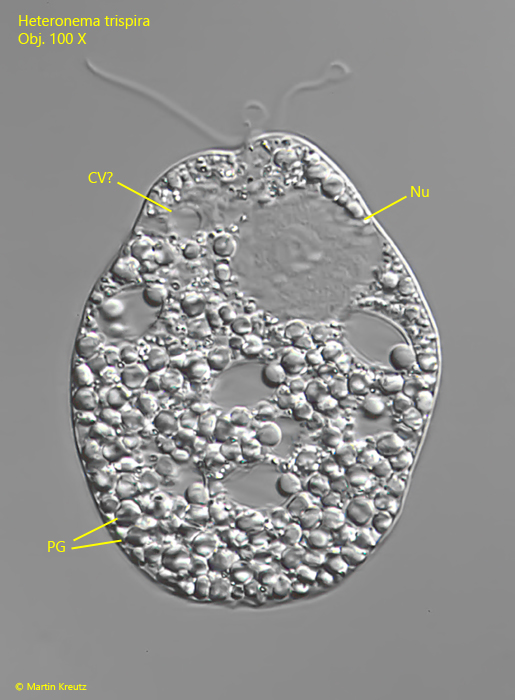Heteronema trispira (Matvienko, 1938)
Most likely ID: n.a.
Synonym: n.a.
Sampling location: Simmelried
Phylogenetic tree: Heteronema trispira
Diagnosis:
- body spindle-shaped, spirally twisted usually with 3 turns
- anterior and posterior ends are extended teat-shaped
- length 96–130 µm, width 39–46 µm
- leading flagellum about body length
- trailing flagellum about half as long as body
- periplast with spirally striation
- nucleus central
- pharynx with rod-shaped organell
- body filled with numerous roundish paramylon grains

I have found only two specimens of Heteronema trispira so far. The first in January 1998 in Simmelried and the second one in September 2003 in the same locality. After that I have not registered any more finds.
Of Heteronema trispira there seems to exist only the original description and drawing by Matvienko (1938), who found this Heteronema species in a Russian Sphagnum pond. After that there seems to be no other records of this species.
The identification of Heteronema trispira is basing mainly on the shape of the cells with three characteristic turns (s. drawing above and fig. 1 b) which are turned counterclockwise. The anterior end is snout-like extended and the posterior end is tapered and rounded as described and drawn by Matvienko. However, in my population there are some deviations from Matvienk’s description (s. “Diagnosis” above). The swimming flagellum in my specimens was only about half as long as the body and the trailing flagellum only slightly shorter:
Specimen length of body leading flagellum trailing flagellum
1 122 µm 54 µm 50 µm
2 75 µm 36 µm 24 µm
The first specimen found was slender, 122 µm long, triple coiled and with very small paramylon grains (s. fig. 1 a-c). It also contained phagocytosed small algae. The second specimen was much more stout (L = 75 µm), also had three coils and was completely filled with roundish paramylon grains (s. fig. 2 a-d). I could not detect the rod-shaped organelle described by Matvienk in either specimen, although I also squeezed the second specimen and examined it at high magnification (s. fig. 3). In addition, I could not detect any striation of the pellicle in either specimen. It seemed to be smooth.
Since only a few specimens of this species have been found and examined so far, little is known about variability within this species. Further evidence must show whether the deviations from Matvienk’s description that I observed are within this variability.

Fig. 1 a-c: Heteronema trispira. L = 122 µm. The freely swimming specimen found in January 1998. Note the three turns of the body (1–3). Nu = nucleus. Obj. 40 X.

Fig. 2 a-d: Heteronema trispira. L = 75 µm. The freely swimming second specimen found in September 2003. Note the leading flagellum (LF, L = 36 µm) and the trailing flagellum (TF, L = 24 µm). PG = paramylon grains. Obj. 40 X.

Fig. 3: Heteronema trispira. The strongly squashed specimen as shown in fig. 2 a-d. CV = probably the contractile vacuole, Nu = nucleus, PG = paramylon grains. Obj. 100 X.